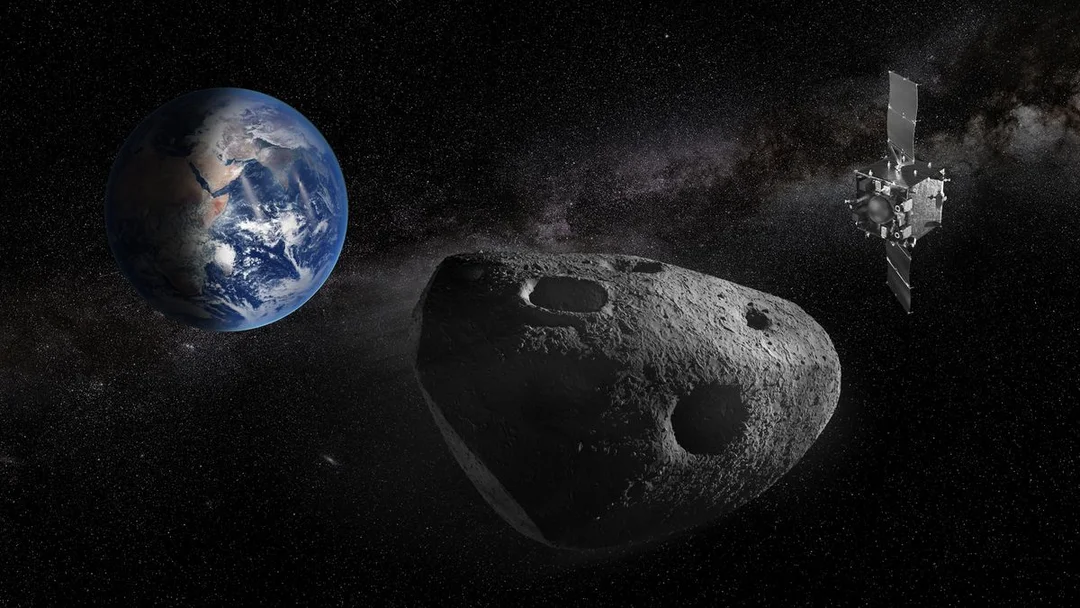
Race to Apophis: ESA and NASA Vie to Study ‘Potentially Hazardous’ Asteroid During 2029 Earth Flyby
The asteroid Apophis, once feared as a potential Earth impactor, is now the focal point of an international space race. Both the European Space Agency (ESA) and NASA are planning missions to study the 1,100-foot-wide (340 meters) asteroid during its exceptionally close, yet safe, flyby of Earth on April 13, 2029.
ESA is leading the charge with its Ramses (Rapid Apophis Mission for Space Safety) mission, slated for a 2028 launch. Ramses aims to conduct a comprehensive analysis of Apophis, examining its surface characteristics, composition, and orbit both before and after its close encounter with Earth. This gravitational interaction is expected to trigger tidal forces within the asteroid, which could potentially alter its surface and interior. Understanding these changes is critical for planetary defense efforts.

Adding an ambitious twist, ESA plans to include a cubesat in the Ramses mission to attempt a landing on Apophis. "Landing on an asteroid is very challenging," said Paolo Martino, Ramses project manager. "The irregular shape and surface properties make it difficult to identify a stable landing site, while the very weak gravity makes it hard to stay on the surface without bouncing off and drifting away." The mission relies on financial commitment from ESA member states at an upcoming Ministerial Council meeting.
Politecnico di Milano is contributing to ESA's mission with its DART (Deep-space Astrodynamics Research and Technology) Laboratory. They will oversee mission design, autonomous navigation systems, and capture detailed images of Apophis using the RCS-1 CubeSat. "Being part of the Apophis mission is a tremendous honour. We are developing state-of-the-art technologies that will venture into deep space," said Professors Topputo and Ferrari.
Innalabs, an Irish company, has secured a contract with ESA to provide its ARIETIS-NS gyroscope navigation system for the Ramses mission, building on its success with the Hera mission. This technology will be crucial for navigating the spacecraft during the close approach.
While NASA currently lacks the budget for a dedicated mission, there's hope that the shelved Janus spacecraft might be repurposed for a pre-Earth-encounter investigation. According to a SpaceNews report, Nicky Fox, NASA associate administrator for science, stated that the agency is exploring possibilities for using Janus for an Apophis mission, pending budget approvals for fiscal year 2026 and beyond.
Fortunately, NASA will have at least one spacecraft observing Apophis. The OSIRIS-REx spacecraft, now on an extended mission named OSIRIS-APEX, will arrive at Apophis approximately one month after the Earth flyby. Additionally, a delayed Japanese mission, DESTINY+, originally planned to study asteroid 3200 Phaethon, will now also conduct a flyby of Apophis in 2029.
Scientists are emphasizing the importance of comprehensive investigations beyond mere flybys. A summary communique from the Apophis T-4 workshop stated, "We recognize that the entire world will be watching how we collectively respond to the knowledge opportunity for planetary defense presented by the safe but very close Earth passage by the asteroid Apophis in April 2029.
With multiple agencies and nations converging on Apophis, the 2029 flyby promises to be a landmark event in planetary science and defense. What key insights do you hope these missions will uncover? Share your thoughts in the comments below.